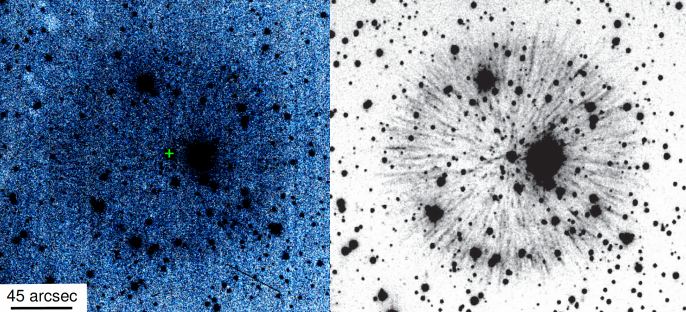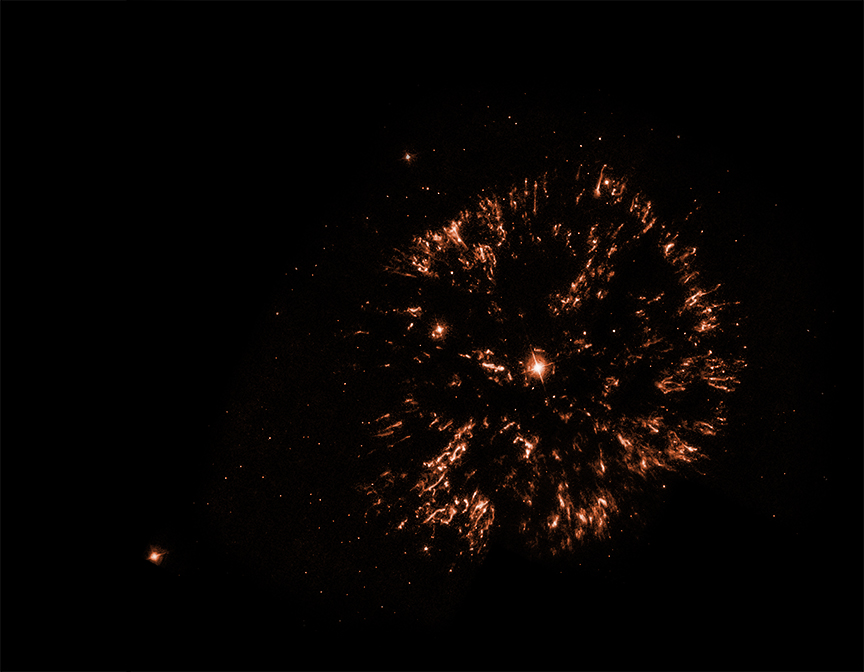One-of-a-Kind Supernova Remnant PA 30
Posted: Tue Nov 14, 2023 9:40 pm
From an amateur PN candidate to the Rosetta Stone of SN Iax research
universe today
November 14, 2023 by Jon Voisey
universe today
November 14, 2023 by Jon Voisey
TY4YA JacAn Amateur Astronomer Discovered One-of-a-Kind Supernova Remnant
In 2023, amateur astronomer Dana Patchick was looking through images from the Wide-field Infrared Survey Explorer archive and discovered a diffuse, circular object in the constellation of Cassiopeia. He found this apparent nebula was interesting because it was bright in the infrared portion of the spectrum, but virtually invisible in the colors of light visible to our eyes. ...
Although PA 30 was initially flagged as a potential planetary nebula, it quickly became apparent that it was anything but.
Just a year after its discovery, astronomers examined the object. With planetary nebulae, the central star has shed most of its outer layers resulting in the still extremely hot core of the star being exposed. The radiation from this star will heat the nebula created causing emission lines in the spectra. However, these emission lines were absent in the spectrum of PA 30.
Follow-up observations were conducted in 2016. These revealed winds from the central star at “unprecedented” speeds of 16,000 km/sec (5% the speed of light). Emission lines were found from the central star of highly ionized oxygen and carbon but both the central star and nebula lacked hydrogen and helium. The nebula was expanding with speeds of roughly 1,100 km/sec – as much as 100x the expansion speed of a typical planetary nebula.
However, these features don’t entirely line up with the expectations for a supernova either. First off, the expansion speed of the nebula was lower than most supernovae ejecta. Second, even in most supernovae, hydrogen and helium should still be present as it is the outer layer of the stars getting blasted off in the explosion.
The first attempt to explain this came in 2019. There, astronomers suggested that the supernova was caused by the merger of two white dwarfs which were both already depleted of these lighter elements as they released their atmospheres at the end of their main sequence lifetimes. Specifically, astronomers proposed that this was the merger of a white dwarf with a carbon/oxygen atmosphere with one with an oxygen/neon atmosphere creating an exceptionally rare type of supernova known as a SN Type Iax.
This proposition solves both of the problems. The previous loss of the atmospheres explains why hydrogen and helium were not present. Also, this type of supernova does not have as big of a bang as others, explaining the lower than anticipated expansion rate.
Further study supported this. Digging deeper into the spectra, the study found that the spectra had higher abundances than anticipated of neon and magnesium, which are the results of carbon fusion. This made PA 30 the only known supernova of this type within our galaxy.
...the whole story...
Arxiv: From an amateur PN candidate to the Rosetta Stone of SN Iax research





